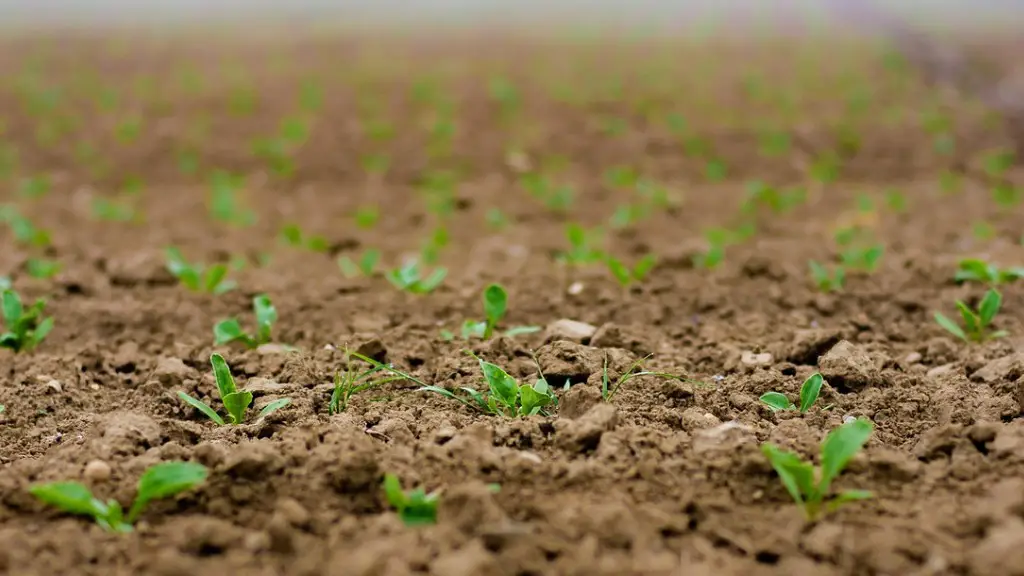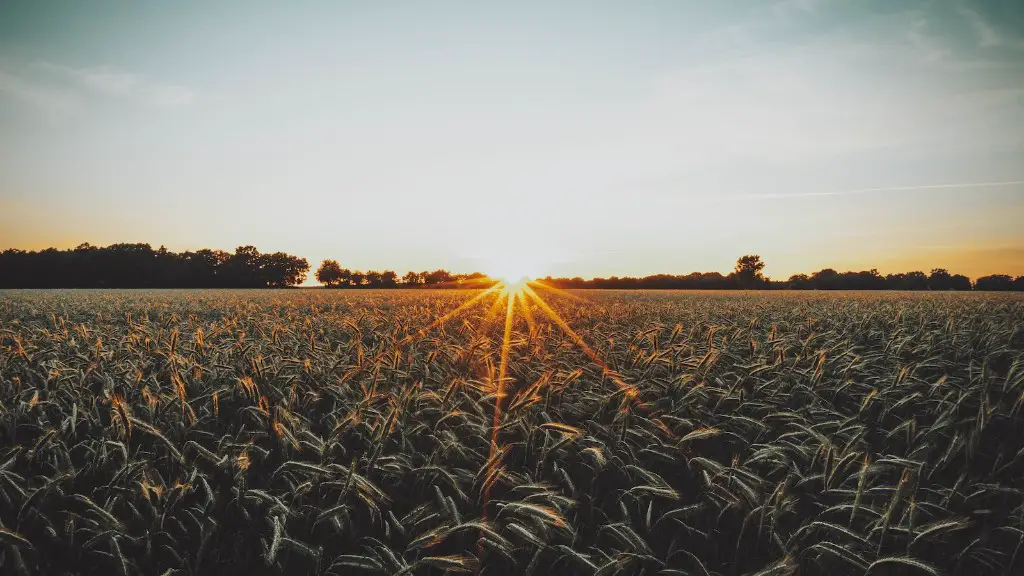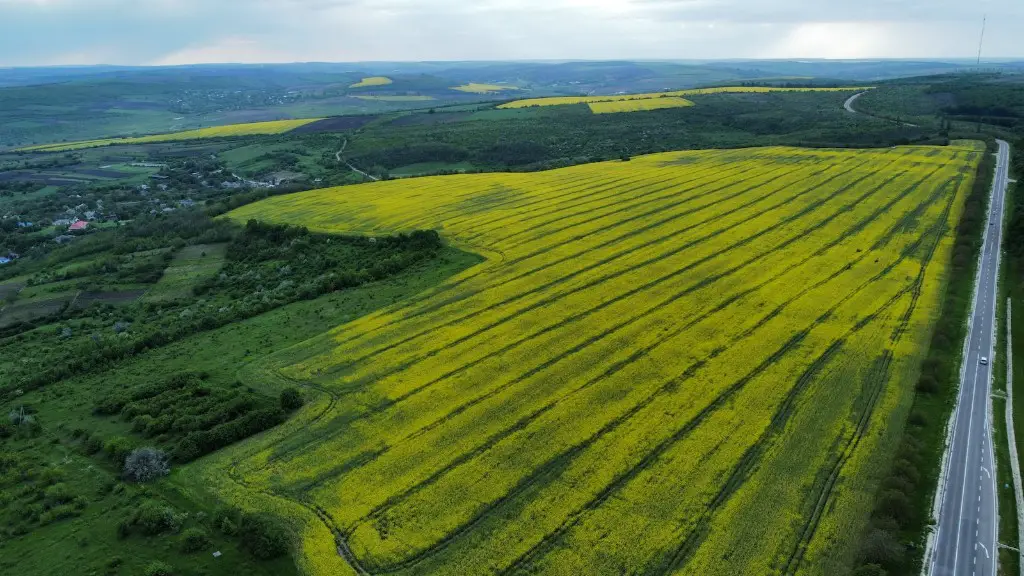The agricultural sector is a significant contributor to greenhouse gas emissions, accounting for approximately 10% of global emissions. Agriculture contributes to climate change through emissions of methane and nitrous oxide from livestock and fertilizer use, and through deforestation and land-use change. Methane emissions from agriculture account for approximately 20% of total anthropogenic methane emissions, and nitrous oxide emissions from agriculture represent approximately 60% of total anthropogenic nitrous oxide emissions. Deforestation and land-use change associated with agriculture are responsible for approximately 10% of global greenhouse gas emissions.
climate change is a result of a number of factors, agriculture among them. Greenhouse gas emissions from farming – including from livestock, fertilizer use, and tilling – account for about 10% of the world’s total greenhouse gas emissions. This makes agriculture second only to the energy sector in its contribution to climate change.
Methane and nitrous oxide, two greenhouse gases that are produced in large quantities by agriculture, are particularly potent in trapping heat in the atmosphere. Livestock are a significant source of methane, while the use of synthetic fertilizers is a major contributor of nitrous oxide emissions.
While agriculture is a significant driver of climate change, it is also one of the sectors most vulnerable to the impacts of a changing climate. Extreme weather events – like droughts, floods, and heatwaves – are expected to become more frequent and intense as the planet warms, posing risks to crop yields and livestock.
Is agriculture a main contributor to climate change?
Agriculture is a significant contributor to global warming, accounting for about 10% of all human-caused emissions.
Reducing agricultural emissions—largely methane and nitrous oxide—could play a significant role in climate change mitigation.
There are a number of ways to reduce agricultural emissions, including:
-Improving agricultural practices (e.g. reducing methane emissions from livestock)
-Increasing the efficiency of agricultural production (e.g. using less fertilizer and irrigation water)
-Changing land use practices (e.g. planting trees or using cover crops)
-Reducing food waste
-Increasing the use of renewable energy in agriculture
The global food system is responsible for a large percentage of annual emissions, as commonly reported using the 100-year Global Warming Potential. This is a significant problem that needs to be addressed in order to reduce the impact of climate change.
How does agriculture affect the environment
Agriculture is the leading source of pollution in many countries. Pesticides, fertilizers and other toxic farm chemicals can poison fresh water, marine ecosystems, air and soil. They also can remain in the environment for generations.
Fossil fuels are a major contributor to climate change.
Coal, oil and gas are the three main fossil fuels and they account for over 75% of global greenhouse gas emissions.
Carbon dioxide emissions from fossil fuels are the main driver of climate change.
As greenhouse gas emissions increase, they trap more heat from the sun, causing the Earth to warm.
Fossil fuels are a major contributor to climate change and we need to find ways to reduce our dependence on them.
Is agriculture worst for climate change?
Factory farming is playing a major role in climate change, releasing large amounts of greenhouse gases into the atmosphere. These gases contribute to the warming of the planet, which in turn can lead to more extreme weather conditions, rising sea levels and other devastating impacts.
Factory farming must be stopped if we are to avoid the worst consequences of climate change. We need to move towards more sustainable and humane farming practices that do not have such a damaging impact on our environment.
The agricultural sector is responsible for a significant portion of global greenhouse gas emissions. The three main sources of agricultural greenhouse gases are carbon dioxide (CO2) from tropical deforestation, methane (CH4) from livestock and rice production, and nitrous oxide (N2O) from fertilizing or burning croplands. Agriculture is responsible for about half of global methane emissions, making it a significant contributor to climate change. There are a number of ways to reduce agricultural greenhouse gas emissions, including reducing deforestation, promoting sustainable livestock and rice production practices, and improving fertilizer and tillage management.
What are the 4 major contributors to climate change?
Greenhouse gas emissions are one of the leading causes of climate change. The primary sources of greenhouse gas emissions are electricity and heat, agriculture, transportation, forestry, and manufacturing. Energy production of all types accounts for 72 percent of all emissions. Reducing greenhouse gas emissions will require a concerted effort from all sectors of the economy.
There are many causes of global warming, but the two most significant are carbon pollution and climate change. Carbon pollution comes from burning fossil fuels such as coal, oil, and natural gas. When these fuels are burned, they release carbon dioxide and other greenhouse gases into the atmosphere. Climate change refers to the long-term alteration of temperature and typical weather patterns in a place. Together, carbon pollution and climate change are causing the Earth to warm at an unprecedented rate.
Is animal agriculture the biggest polluter
Animal agriculture is a leading cause of greenhouse gas emissions, contributing to climate change. Animal agriculture produces 65% of the world’s nitrous oxide emissions, which has a global warming impact 296 times greater than carbon dioxide. Raising livestock for human consumption generates nearly 15% of total global greenhouse gas emissions, which is greater than all the transportation emissions combined. Reducing our consumption of animal products is a critical step in combating climate change.
Fossil fuels, deforestation, and livestock production are all major contributors to climate change. Burning fossil fuels releases greenhouse gases like carbon dioxide and methane into the atmosphere, which trap heat and cause the Earth’s temperature to rise. Deforestation also contributes to climate change, as trees and other plants help to regulate the Earth’s temperature by absorbing carbon dioxide. And finally, livestock production creates methane, another powerful greenhouse gas. all of these activities are having a significant impact on the Earth’s climate and its ability to support life.
Who is the biggest polluter in the world?
China was the biggest emitter of carbon dioxide (CO₂) emissions in 2021, accounting for nearly 31 percent of the global emissions. The world’s top five largest polluters were responsible for roughly 60 percent of global CO₂ emissions in 2021. These five countries are China, the United States, India, Russia, and Japan. Together, they emitted about 18.3 billion metric tons of CO₂ in 2021. This is equivalent to about 60 percent of the world’s total CO₂ emissions of 30.5 billion metric tons in 2021.
The top five emitting countries have been responsible for a similar share of global emissions for many years. In fact, the top 10 emitting countries have been responsible for roughly 75 percent of global emissions since 1950.
reductions in emissions will be necessary to meet global climate goals. The Paris Agreement, which was signed by nearly 200 countries in 2015, calls for limiting global temperature rise to well below 2 degrees Celsius (3.6 degrees Fahrenheit) above preindustrial levels. To have a 75 percent chance of meeting this target, global emissions need to be reduced by about 40 percent from 2010 levels by 2030.
China, the United States, and other high-emitting countries will need
1. Burning fossil fuels such as coal, oil, and gas releases greenhouse gases into the atmosphere.
2. Deforestation and other land use changes also contribute to greenhouse gas emissions.
3. Industrial processes such as cement production and smelting also release greenhouse gases.
4. Waste disposal and livestock farming also contribute to greenhouse gas emissions.
5. Some aerosere products such as refrigerants and aeroser electronics can also release greenhouse gases.
6. Transport, including both private vehicles and public transport, is a major source of greenhouse gas emissions.
7. Oil drilling and mining operations can also release greenhouse gases.
8. The production and use of certain industrial chemicals can also release greenhouse gases.
9.Flaring of gas associated with the oil and gas industry is another source of greenhouse gas emissions.
10.Geological processes such as volcanic eruptions can also release greenhouse gases into the atmosphere.
How far is man harming the Earth
The way we use land has a direct impact on the environment. Deforestation, the degradation of land, loss of biodiversity and pollution are all a result of human activity. These activities have a negative impact on land and freshwater ecosystems. We need to be more conscious of the way we use land in order to protect our environment.
We know that the Sun can influence Earth’s climate, but it isn’t responsible for the warming trend we’ve seen over recent decades. The Sun is a giver of life; it helps keep the planet warm enough for us to survive. We know subtle changes in Earth’s orbit around the Sun are responsible for the comings and goings of the ice ages.
What daily activities contribute to climate change?
The human activities that cause climate change are driving cars, creating electricity, and cutting down forests. These activities release gases into the atmosphere called greenhouse gases, which slowly warm the planet, creating climate change.
With the ever-growing demand for sugar, many companies are increasingly large sugar plantations to keep up with production. However, this practice is having devastating consequences on the planet.
According to a study by WWF, sugar is among the crops most harmful to the planet. By replacing habitats rich in animal, plant and insect life, sugar plantations destroy the most biodiversity in the world. This loss of biodiversity can lead to changes in the local climate and the loss of valuable ecosystem services.
In addition, the production of sugar requires large amounts of water and energy, which can put strain on local resources. Sugar plantations also generate large amounts of pollution, which can damage delicate ecosystems.
It is clear that the way we currently produce sugar is not sustainable. If we want to protect the planet, we need to find a better way to grow and process this crop.
Final Words
Agriculture contributes to climate change in a number of ways. Agricultural activities can lead to deforestation, which can release greenhouse gases into the atmosphere and contribute to climate change. Agricultural activities can also lead to the release of methane and nitrous oxide, which are both potent greenhouse gases. In addition, agriculture can impact local climate patterns, which can in turn influence global climate patterns.
The agricultural sector plays a significant role in greenhouse gas emissions, accounting for around 10-12 percent of global emissions. The sector also contributes to climate change through land-use change and deforestation, which can release large amounts of carbon dioxide into the atmosphere. Agriculture can also contribute to climate change through the production of methane and nitrous oxide, which are both powerful greenhouse gases.




